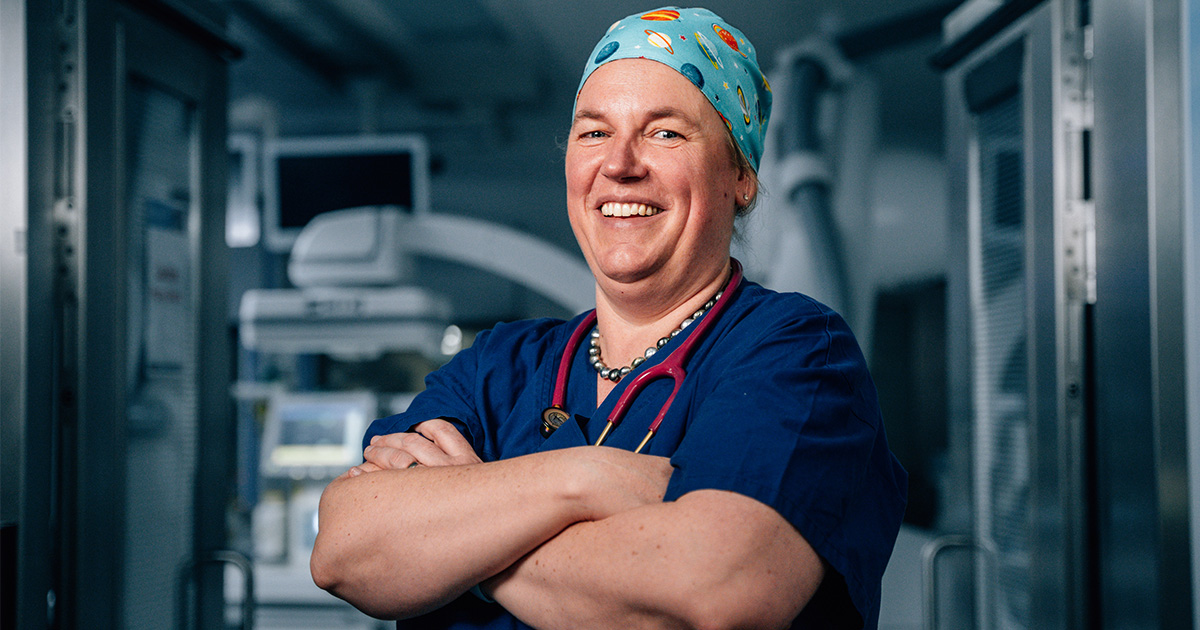Search
Research
High-flow nasal oxygen for children's airway surgery to reduce hypoxaemic events: a randomised controlled trialTubeless upper airway surgery in children is a complex procedure in which surgeons and anaesthetists share the same operating field. These procedures are often interrupted for rescue oxygen therapy.
Research
Propofol, Anesthesia, and Neurocognitive Outcomes in Patients with Pediatric Leukemia: Are We Missing the Forest for the Trees?Britta Regli-von Ungern-Sternberg AM FAHMS MD, PhD, DEAA, FANZA Chair of Paediatric anaesthesia, University of Western Australia; Consultant
Research
Perioperative steroid prophylaxis for adrenal insufficiency, a single-centre experienceBritta Regli-von Ungern-Sternberg AM FAHMS MD, PhD, DEAA, FANZA Chair of Paediatric anaesthesia, University of Western Australia; Consultant

News & Events
Prime Minister’s Prize for pioneering WA anaesthetistCongratulations to trailblazing Western Australian paediatric anaesthetist and researcher Professor Britta Regli-von Ungern-Sternberg, who has been awarded a prestigious Prime Minister’s Prize for Science for globally influential research that has made surgery and recovery safer for babies and children.
Research
Airway management in neonates and infants: European Society of Anaesthesiology and Intensive Care and British Journal of Anaesthesia joint guidelinesAirway management is required during general anaesthesia and is essential for life-threatening conditions such as cardiopulmonary resuscitation. Evidence from recent trials indicates a high incidence of critical events during airway management, especially in neonates or infants. It is important to define the optimal techniques and strategies for airway management in these groups.
Research
Trends in paediatric anaesthesia research publications and the impact of author sex, country of origin, topic, and external fundingThe current research landscape has become increasingly competitive with approximately 35% of submitted manuscripts accepted for publication by peer-review journals. It is known that studies with certain 'favourable characteristics' have an increased likelihood of acceptance for publication, such as prospective study design, multiple sites, and notable authors.
Research
Difficult or impossible facemask ventilation in children with difficult tracheal intubation: a retrospective analysis of the PeDI registryDifficult facemask ventilation is perilous in children whose tracheas are difficult to intubate. We hypothesised that certain physical characteristics and anaesthetic factors are associated with difficult mask ventilation in paediatric patients who also had difficult tracheal intubation.
Research
Pediatric Airway Management in Times of COVID-19-a Review of the Evidence and ControversiesThis review summarizes and provides a comprehensive narrative synthesis of the current evidence on pediatric airway management during the COVID-19 pandemic.
Research
A survey of the global impact of COVID-19 on the practice of pediatric anesthesia: A study from the pediatric anesthesia COVID-19 Collaborative GroupPediatric anesthesiology has been greatly impacted by COVID-19 in the delivery of care to patients and to the individual providers. With this study, we sought to survey pediatric centers and highlight the variations in care related to perioperative medicine during the COVID-19 pandemic, including the availability of protective equipment, the practice of pediatric anesthesia, and economic impact.
Research
Is there a role for lung-protective ventilation in healthy children?Lung-protective ventilation (LPV) has been adopted in the theater environment as a strategy to reduce pulmonary complications under anesthesia. Postoperative pulmonary complications are not infrequent and may have significant implications on the postoperative length of stay as well as the morbidity and mortality of pediatric patients.
